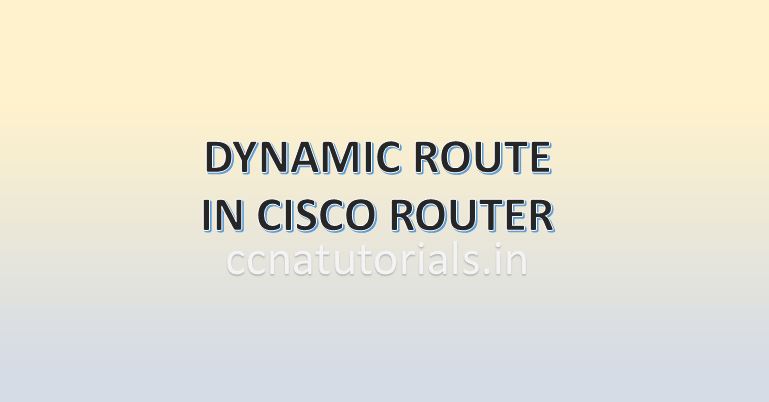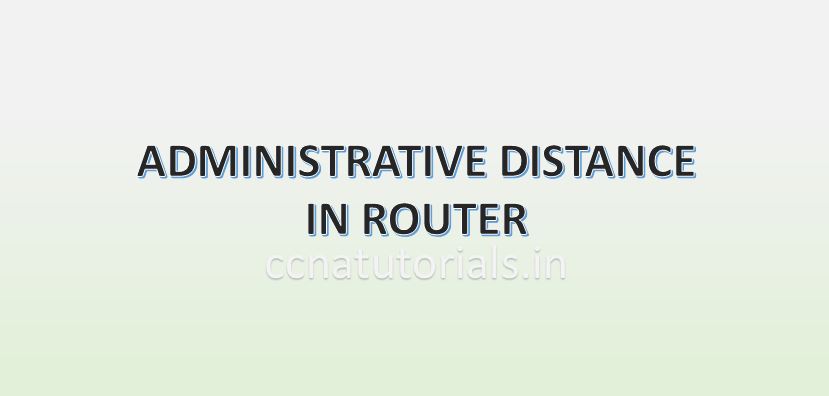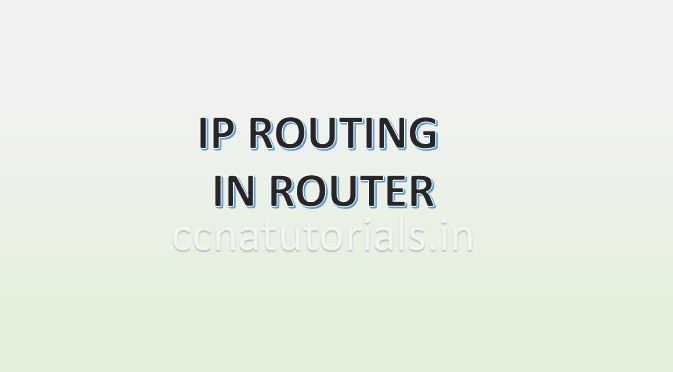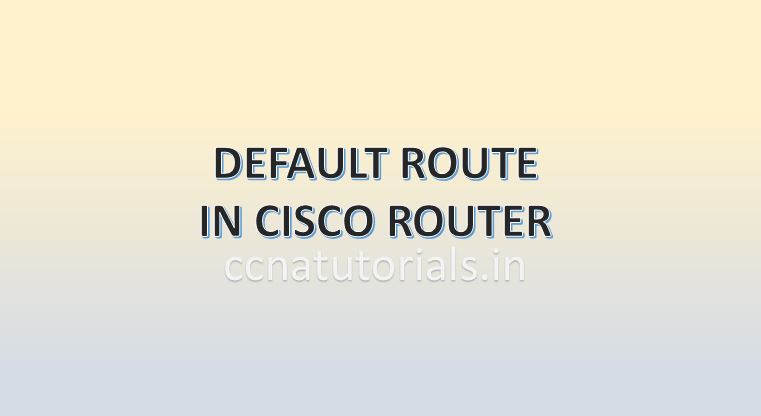Contents of this article
In this article I describe the term dynamic routing in router related to networking. IP routing in router is a process of packet transfer between different networks via a router. Static route in a router is a type of IP routing in router. When we access the internet or intranet the data packets transmitted and received by IP routing in router. Every interface of router has a different network.
Routers are also known as layer3 device. Various routing and routed protocols used for moving packets between different networks. Generally the IP routing in router is done by static routing, default routing and dynamic routing protocols. Before understanding the static route in a router it will be good to understands about IP routing in router.
Requirement of IP routing in router
The function of a router is to move the data packets from one interface to another interface or we can say between different networks. The movement of packets done at layer 3 which is known as network layer of the OSI reference model. Router keep the information of neighbour router and network in its routing table.
There may be many interfaces in a router which connect different networks. How the router moves the packet to its destination it depends on routing and routed protocol. Static route in a router is a set of protocols which allow the router to transfer the packet to its destination. To understand the IP routing in router it is necessary to know about the routing and routed protocol firstly.
Routing protocol for IP routing in router
Routing protocols helps router to build and maintain the routing table in routers. Routing protocols are one important part of default routing in router. Routing protocols inform the router about the networks connected at each interface. Routing protocols doesn’t carry or push the data packets in any way. Any change in the network required to be update in the routing tables of all routers. This task is carried out by the routing protocols. Routing protocols help the routers to select the best path to exit the data packets.
Example of routing protocols are RIP, RIPv2, IGRP,OSPF etc. Routing protocols further divided into distance vector, link state and hybrid protocols. These all routing protocols update the routing table of all routers in the network. You can see the routing protocols by “show ip route” command in privilege command mode of router. Routing protocols are not responsible for data packet flow in any way. Routing protocols spread the information of network hierarchy to all routers.
Routed protocol for IP routing in router
Routed protocol works with the data packets for default routing in router. Routed protocol sends the data packets within a router’s interfaces. Routing protocol decide the best path and routed protocol send the packets on these paths. Routed protocols are defined on interfaces of router. Routed protocols do not update or maintain the routing table in a router. Routed protocols are responsible for flow of data packets from one network to another network.
Routed protocols sends the data packets to correct exit interface of the router. Routed protocols are configured on interfaces of the router. Example of routed protocols are IP, IPv6, IPX and Appletalk. Routed protocols are basically addressing schema of the interfaces of router. Router identify the destination network of a data packet and send the data packet to correct exit interface. The concept of subnetting takes place in routed protocols.
Fundamentals of IP routing in router
We know that routers used to connect the different LAN and WAN. We required to connect the different network with a router physically firstly. After completion of physical connectivity next step is to configure the logical network addresses and routing protocols. Each LAN or WAN works in a fix network ID. In case of router I mention the network ID for each LAN. When we work in a LAN, I mention the IP address for each host. Each host assigned a gateway which is the interface of the router to out the packet from that LAN. Router do not forward the packet to host. Router transfer the packet for network ID.
The flow of packets between different LAN depends on destination address on the packet. All routers maintain the routing table to determine the best route to remote network. Routing protocol keep update the routing table in IOS of router. The routing table help to find the destination network of a packet. Basically multiple protocols works for dynamic routing in router to transfer the data between different networks.
Commands to check the routing table
We can see the routing table in privilege command mode of router. “show ip route” command can be use to check the routing table in a router. see the below command which show the routing table of the router.
Router>en Router#show ip route Codes: C - connected, S - static, I - IGRP, R - RIP, M - mobile, B - BGP D - EIGRP, EX - EIGRP external, O - OSPF, IA - OSPF inter area N1 - OSPF NSSA external type 1, N2 - OSPF NSSA external type 2 E1 - OSPF external type 1, E2 - OSPF external type 2, E - EGP i - IS-IS, L1 - IS-IS level-1, L2 - IS-IS level-2, ia - IS-IS inter area * - candidate default, U - per-user static route, o - ODR P - periodic downloaded static route Gateway of last resort is not set C 2.0.0.0/8 is directly connected, Loopback0 C 10.0.0.0/8 is directly connected, Serial0/0/0 C 11.0.0.0/8 is directly connected, Serial0/0/1 192.165.23.0/32 is subnetted, 1 subnets O 192.165.23.1 [110/65] via 10.0.0.1, 00:00:02, Serial0/0/0 192.168.25.0/32 is subnetted, 1 subnets O 192.168.25.1 [110/65] via 10.0.0.1, 00:00:02, Serial0/0/0 192.168.30.0/32 is subnetted, 1 subnets O 192.168.30.1 [110/65] via 10.0.0.1, 00:00:02, Serial0/0/0 Router#
Dynamic Routing in Router explained with example
Dynamic routing in router propagate the routing table itself. We can configure the routing in router manually or dynamically. Static routing perform the packets transfer very efficiently in small network. It is very difficult to configure and maintain the static routing in large networks. We required a automatic method of routing in routers in large networks. Basically routing is necessary to flow the data packets from one network to another network. We configure the routing table in routers to achieve the aim.
Dynamic routing helps the routers to select the path for data packets in network. Routing table of routers updates automatically from one router to other routers in a large network. Routers are self responsible to transmit the new update in routing tables. Dynamic routing protocols dynamically select the network distance and other factors for data flow in a large network.
Dynamic routing in router explained
Maintenance of routing table in all routers in a network is very critical job. Dynamic routing make it easy to maintain the routing table in all routers in a network. Dynamic routing protocols make it easy to take decision to select the best path for data packets. The routers transmits and receive the routing information in a fix time interval and update the routing table. Any change in network is immediately updated in all routers by sharing information. The drawback of dynamic routing is that more bandwidth consumed than static routing. Dynamic routing make easy to maintain the routers in large network.

When a router gone defective or new router added in network, the dynamic protocols updates the routing table in all routers in network. The routers exchange the network update between each other by broadcasting and multicasting.
Example of Dynamic routing in router
In static routing we configure the route in routers manually. Some dynamic routing protocols help to do the job of static routing in all routers in a large network. RIP (Routing information protocol) OSPF ( Open Shortest Path First) are example of dynamic routing protocol. Dynamic routing protocols are further used two methods for sharing the routing information. Distance-vector and Link-State routing protocols used different technique for sharing route table information.
Distance-Vector and Link-State protocols
Distance-Vector routing protocols select the best path for data packets. Here distance is reference of hop in network. Distance-Vector protocols calculate the distance between source and destination on the basis of hop count. Suppose there are two path available for data packet from source and destination. Distance-Vector protocol select the path in which the number of hopes are less. RIP and IGRP are example of Distance-Vector routing protocol.
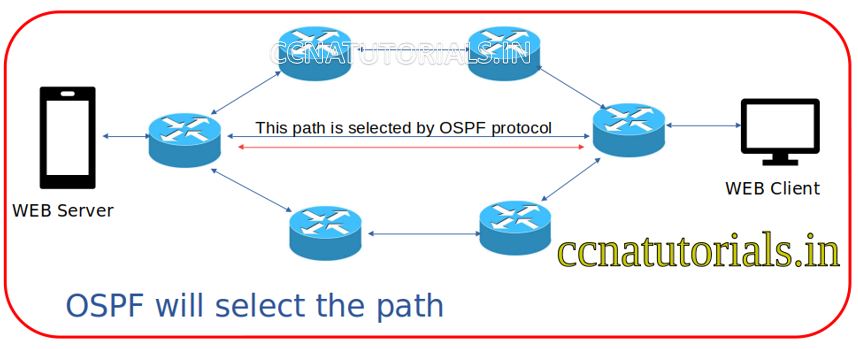
Link_State routing protocols does not work on hope count measure. Link-State routing protocols use the topology of internetwork. Topology means the speed of interface and administrative distance etc. OSPF is the example of Link-State protocol. In large network both Distance-Vector and Link-State used together for better performance in network. EIGRP and RIPv2 are example of hybrid protocols used in large networks. In next articles we discuss in brief about the Distance-Vector and Link-State routing protocols.
I hope you found this article helpful related to the dynamic routing in router. For any query or suggestion on this article contact us or drop a comment below. Your suggestions are always welcome by us.
